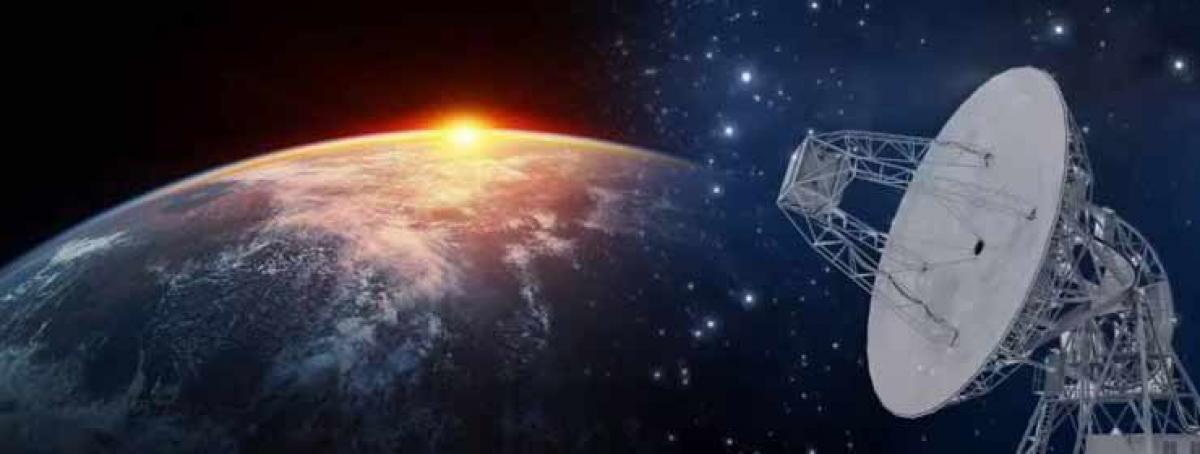Live
- US accounts for 18 per cent of Indian exports in FY24
- Will end Naxalism in Chhattisgarh by March 2026: Amit Shah
- Will gift one project daily to people during Jan Kalyan Parv
- Mahakumbh & the Politics of Sanatan Nationalism
- A Soulful Celebration of Global Music
- Brahmin Community delegation felicitates CM Saini
- Allu Arjun Visits Chiranjeevi’s House for Lunch Meet
- Toyota organising TG Grameena Mahotsav
- Special rituals conducted at Maramma Temple
- Siddaramaiah has special love for Muslims: BJP
Just In

x
Highlights
Analysing over 650 hours of archival data, a team of astronomers has for the first time uncovered the most detailed record ever of a \"Fast Radio Burst\" from outer space.
Toronto: Analysing over 650 hours of archival data, a team of astronomers has for the first time uncovered the most detailed record ever of a "Fast Radio Burst" from outer space.

The research indicates that the mysterious radio pulses originated inside a highly magnetised region of space, possibly linking it to a recent supernova or the interior of an active star-forming nebula.
Fast Radio Bursts (FRBs) -- bursts of energy from space that appear as a short flashes of radio waves to telescopes on Earth -- have baffled astronomers since it was first detected a decade ago.
While only 16 have ever been recorded, scientists believe there could be thousands of FRBs a day.
"We now know that the energy from this particular burst passed through a dense magnetised field shortly after it formed," said Kiyoshi Masui, astronomer with the University of British Columbia in Canada and lead author of the paper published in the journal Nature.
The newly-identified FRB was discovered using data-mining software developed by Masui and Jonathan Sievers from University of KwaZulu-Natal in Durban, South Africa.
The recorded data -- a total of 40 terabytes -- created a substantial analysis challenge.
The software enabled the astronomers to find bursts more quickly within the data, an effort led by Hsiu-Hsien Lin from Carnegie Mellon University in Pittsburgh.
"Hidden within an incredibly massive dataset, we found a very peculiar signal that matched all the known characterizes of a Fast Radio Burst," added Jeffrey Peterson, faculty member with Carnegie Mellon.
Additional analysis of the signal revealed that it also passed through two distinct regions of ionised gas, called screens, on its way to the Earth.
"Taken together, these remarkable data reveal more about an FRB than we have ever seen before and give us important constraints on these mysterious events," Masui pointed out.
The FRB -- dubbed FRB 110523 -- originated no more than six billion light-years from Earth.

Next Story
More Stories
ADVERTISEMENT
© 2024 Hyderabad Media House Limited/The Hans India. All rights reserved. Powered by hocalwire.com







